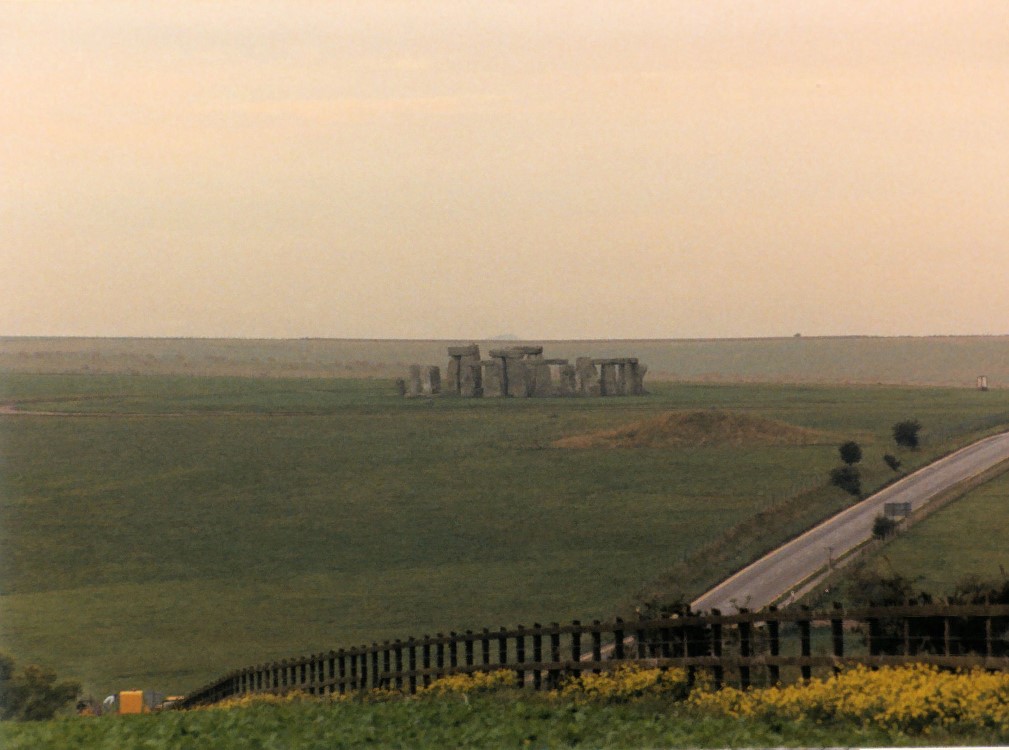


Stone circles, technically known as Henges, are circular alignments of standing stones, most commonly found in the British Isles and across Northern Europe. However, stone circles have been found throughout the world including Brazil, Peru, Portugal, Armenia, Iran, Pakistan, Turkey, Australia and Japan. The earliest known circles are the Gobekli Tepe in Anatolia, Turkey. Dated to around 9000BC, they are 6500 hundred years older than the Pyramids and 6000 years older than Stonehenge.
Nabta Playa is a circle found in the Nubian Desert in Egypt. Constructed around 5000BC, they show a striking similarity to Scottish circles dating to 2000BC. Nabta Playa is thought to be the world’s first astronomical site, built to mark the Summer Solstice and the arrival of the Monsoons.
Stone circles are thought to have been constructed for religious and/or astronomical reasons. They are often aligned to extreme solar or lunar events including nothernmost moonrise, midwinter or midsummer sunrise or sunset, the solstices and equinoxes.
Though stone circles are found throughout the world, the vast majority (over 1000) are found in the British Isles across England, Wales, Scotland and Ireland.
Here I detail the circles I have visited in my travels. To see a large format copy of the photos, doubleclick the picture.

Stonehenge (1988 & 2017)
Lying on the Saulisbury Plain in Wiltshire in southern England near Amesbury, Stonehenge is undoubtedly the best known of the world’s stone circles. Stonehenge was constructed in several phases beginning about 3100BC till about 2000BC. The stones themselves were predated by a number of wooden structures as far back as 8000BC. The initial stone structure consisted of a circular bank and ditch enclosure measuring about 360 feet in diameter. The central stones are aligned to the sunset of the Winter Solstice and the opposing sunrise of the Summer Solstice.
I first visited Stonehenge on my initial visit to England in 1988. At that time, there was a parking lot on the north side of the A360 with a pedestrian tunnel under the roadway to access the Stones. I stayed the night before at Amesbury, at the George Hotel. The next morning as I approached the Stones, I stopped to take several photos of the distant Stones in the morning mist.
Arriving at the car park, I made the walk to the Stones where I encountered a path around the stones and a set of placards that explained the basics of their development. I could have easily walked among the Stones but instead heeded the signs discouraging it. So I remained a respectful 30-50 feet or so away from the Stones. The previous evening at dinner I had talked to a local, about my age, that remembered sitting on the Stones while drinking beer and smoking. Things were in for a change.
In March of 2017, along with my sister, Cissy, and brother, John, I returned to England, this time in search of our Flew forebears. We spent most of the time in the Bristol area but planned a less direct route back to London on departure. While Stonehenge lies south of the M4, it actually offers a more scenic route back to London. Arriving in the area, we were directed to a large parking lot and a shiny new Visitor Center. Opened in 2013, it was complete with a museum, cultural center, gift shop and small restaurant. Here we were directed to purchase a ticket and then walk across the road (remnants of the A360) to the coach barn where we crowded on to a bus with a bunch of “furriners and toorists”. After a short, but noisy ride down the old A360 to the Stones, we offloaded on a path around the Stones. The path took us to within about 30 feet of the Stones but, for the most part, maintained what was probably a 200 foot buffer.
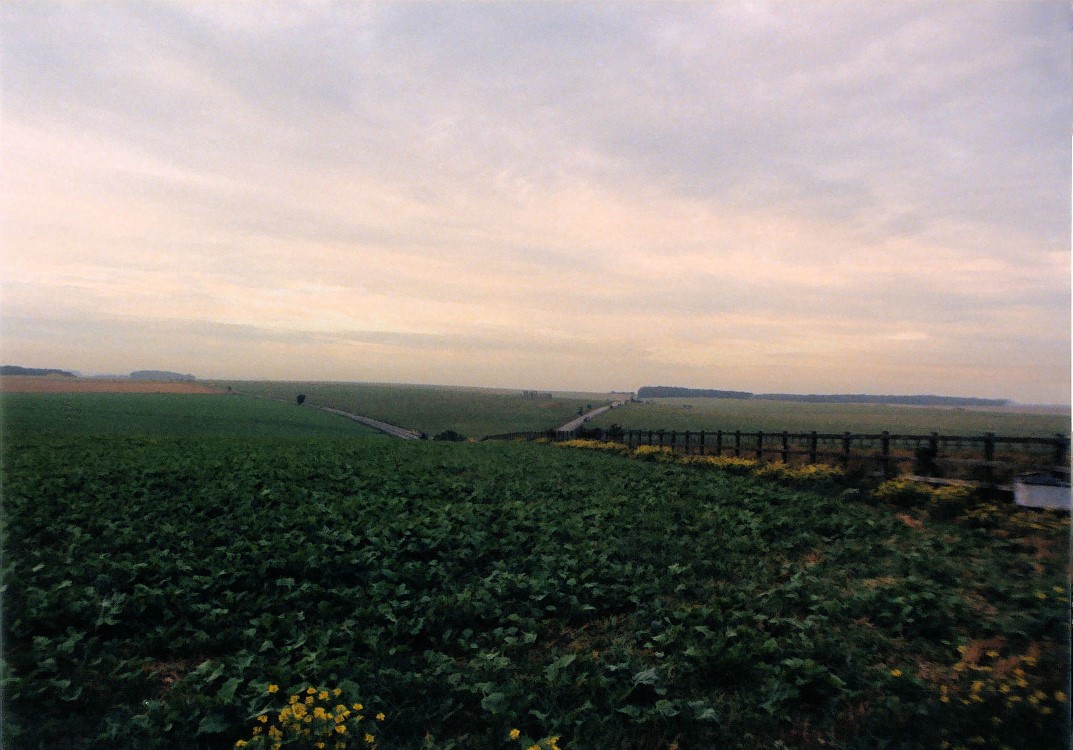
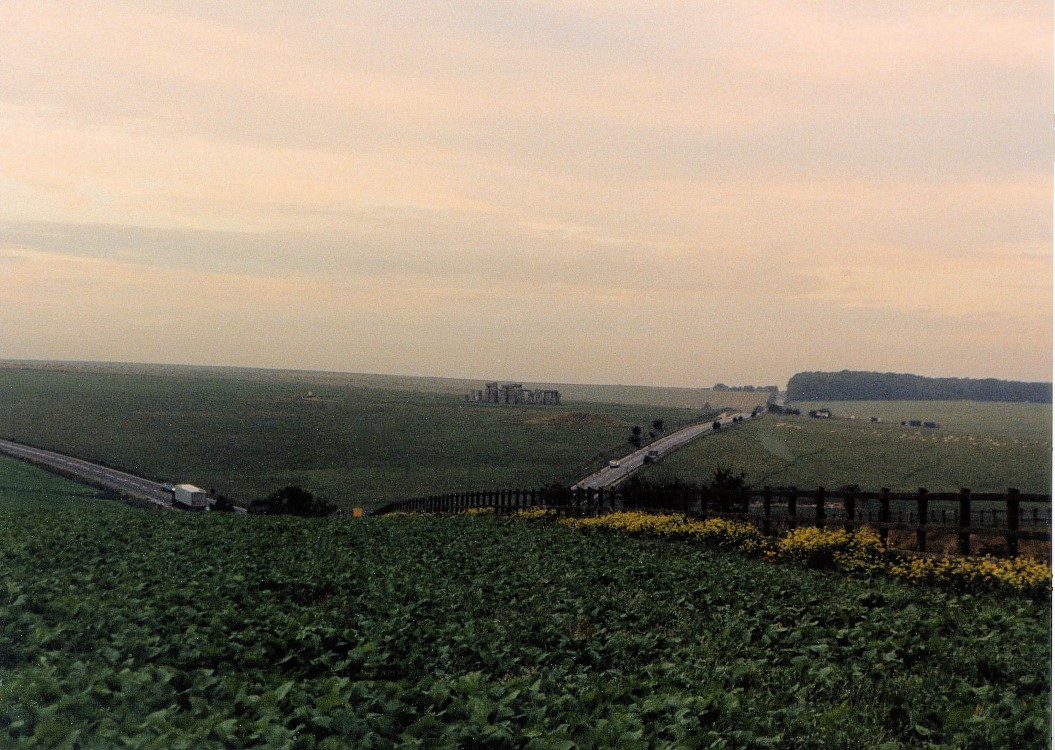


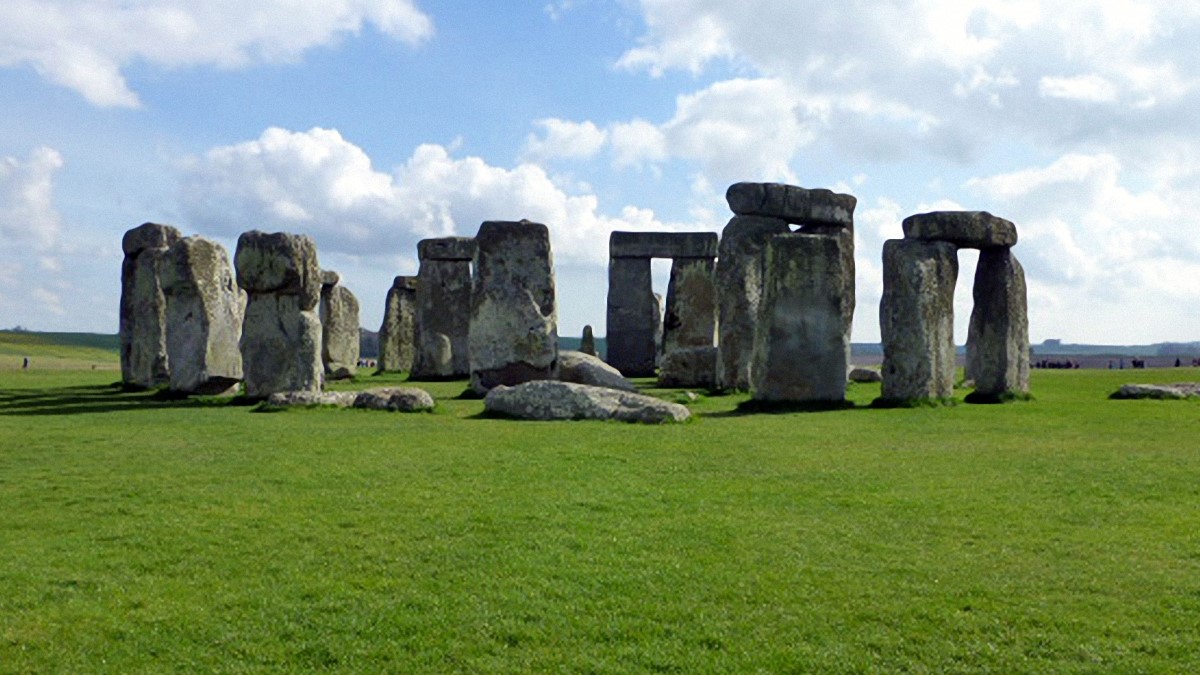
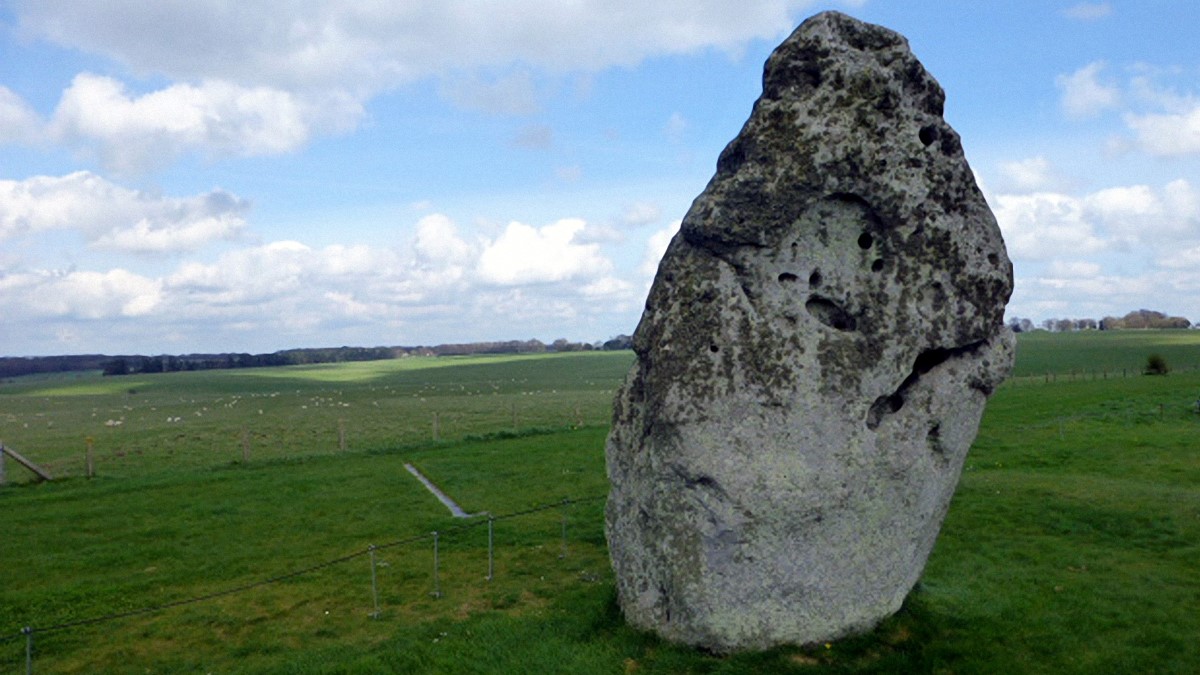

Avebury (1988)
While Stonehenge is much more well known, Avebury Henge probably is more historically significant. It lies in Wiltshire near Marlbourgh approximately 17 miles north as the crow flies of Stonehenge. Made up of three circles, the largest at over 1100 feet in diameter is the largest stone circle in the world. It was constructed from about 2850BC to 2200BC. The stones are surrounded by a ditch that may have been about 30 feet deep and bank that may have crested at 55 feet. However, over the years, the ditch has silted in till it now is only about 10 feet deep. Even this shallow depth remains impressive when you stand at the bottom of it looking up at the stones.
Unlike Stonehenge, visitors are allowed to walk among the stones and even touch them. At no time did I feel I was in danger of getting transported back to Neolithic England.
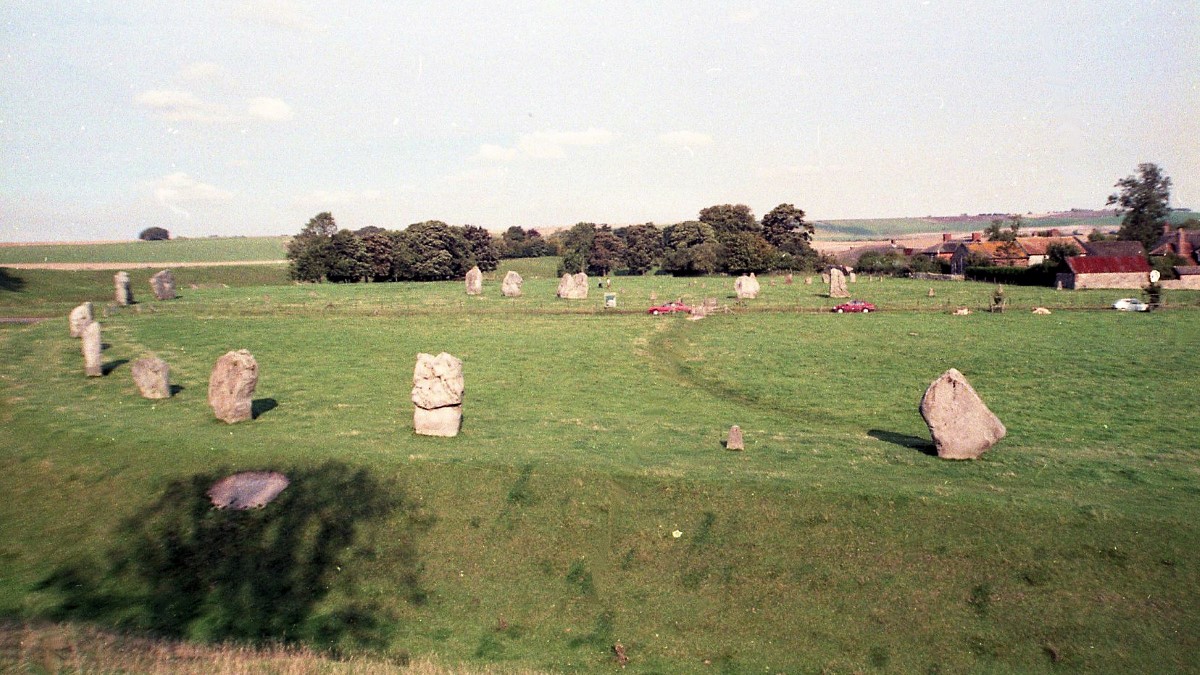

Clava Cairns (2005)
Just east of Inverness lies Clava Cairns, formally known as the Prehistoric Burial Cairns of Bulnuaran of Clava. This is a very well preserved Bronze Age cemetery complex consisting of a group of three cairns each of which is enclosed by the remains a stone circle. Around 2000BC, a row of large cairns was built three of which survive to today. Two of the tombs are passage type while the other is a ring tomb.

Calanais Standing Stones (2011)
In the Scottish Outer Hebrides, on the Isle of Harris just 15 miles west of Stornaway lie the Calanais Standing Stones. This is one of Scotland’s most magnificent and best preserved Neolithic monuments. The Stones are an extraordinary cross-

Stones of Stennis (2008 & 2011)
The Stones of Stennis lie on the Mainland of the Orkney Islands north of the Scottish mainland. Estimated at to have been constructed in 3200BC, they are considered the oldest henge in the British Isles. Of the original 12 stones arranged in a 30 foot cirlce, only four remain standing today. They are thought to be more ceremonial than astronomical.
Along with my friend, Sharon Campbell, I first beheld these Stones in 2008. Just a 15 mile road trip west of Kirkwall, you will pass the Neolithic chambered tomb of Maes Howe, well worth the stop.

Ring of Brodgar (2008 & 2011)
Sounding like something out of the TV series,”
 ikings”, the Ring of Brodgar, at 340 feet in diameter, it is the 3rd largest stone circle in the British Isles. Containing 27 stones today, it was believed to have originally contained 60 megaliths. Less than a mile up the B9055 from the Stones of Stennes, this area is a plethora of Neolithic sites. Since the interior of the circle has not been extensively excavated, the actual age of the site remains uncertain. It is estimated to have been erected between 2500BC and 2000BC.
ikings”, the Ring of Brodgar, at 340 feet in diameter, it is the 3rd largest stone circle in the British Isles. Containing 27 stones today, it was believed to have originally contained 60 megaliths. Less than a mile up the B9055 from the Stones of Stennes, this area is a plethora of Neolithic sites. Since the interior of the circle has not been extensively excavated, the actual age of the site remains uncertain. It is estimated to have been erected between 2500BC and 2000BC.
I first visited the site with Sharon in 2008. I returned with Alex’s tour in 2011.

Kenmare Stone Circle (2009)
In the city of Kenmare in County Kerry, Ireland, is the Kenmare Stone Circle, known locally as The Shrubberies. The Kenmare Circle is composed of 15 heavy boulders in a 50 foot circle. At the center is a Dolmen with a giant capstone. Dolmens often marked the burial place of an important idividual. The exact date of the construction of this Circle is not known though it is believed to have ben built during the Bronze Age which was from 2200-

Ballynoe Stone Circle (2018)
Near the hamlet of Ballynoe in Downpatric, County Down, Northern Ireland, is the large and impressive Ballynoe Stone Circle. The Circle consists of an outer circle of 50 closed spaced upright stones, some as tall as 6 feet, about 110 feet in diameter. The circle encloses a 58 foot by 46 foot burial mound (a passage tomb) with a kerb of 25 stones encompassing about 2/3 of the mound circumference. The site was probably developed during the late Neolithic to early Bronze Age.
In Ireland, these mounds have a particular significance. The mounds are know in Irish as "the sídhe" and those that dwell in them as either the daoine sídhe, aes sídhe or aos sí which translates to "people of the mounds". They are said to be the survivors of the Tuatha Dé Danann (literally the "People of the Goddess Danu") who, after their surrender to the Milesians (who later came to be modern day Irish), agreed to retreat and dwell underground. In folk belief and practice, the aes sídhe are often appeased with offerings to avoid angering or insulting them lest they place a spell on you. We saw trinkets offered to the sídhe on the path to the Stones.

Torhouse Stone Circle
Built in the Neolithic Period, the Torhouse Stone Circle is comprised of 19 granite boulders, the largest of which is over a meter high. They are arranged in a 22 foot diameter circle sitting on a slightly raised table. Three of the stones sit in a line at the center aligned from northeast to southwest. Folklore has it that the three large stones in the center of the circle contain the tomb of Galdus, a mythical Scottish king. It is said the King Galdus fought off the Roman invaders and it is for him that Galloway is named after.
Three other stones stand to the east. I have not been able to find any explanations for them.

Twelve Apostles Stone Circle
The Twelve Apostles Stone Circle lie near Dumfries, Scotland and is not only the 7th largest stone circle in Britain but also the largest on the mainland of Scotland. (The Ring of Brodgar is the largest in Scotland, but, of course, it lies in the Orkney Isles.) Its southwesterly arrangement aligns it with the midwinter sunset. Contrary to its name, the Twelve Apostles Stones contain only eleven stones. A plan taken by Francis Grose in 1789 shows twelve stones; however by 1837 one of the stones had been removed. Local legend has it that the 12th stone was that of Judas Iscariot. How that is known and the whereabouts of the stone is unknown.
The circle measures 293 feet at its maximum diameter; however it is not a true circle as one of the northwest stones is moved to align with the adjacent stones for reasons I cannot discern. The tallest stone in the circle measures about 6'3" in height. There are two other circles nearby but they are not easily accessed.